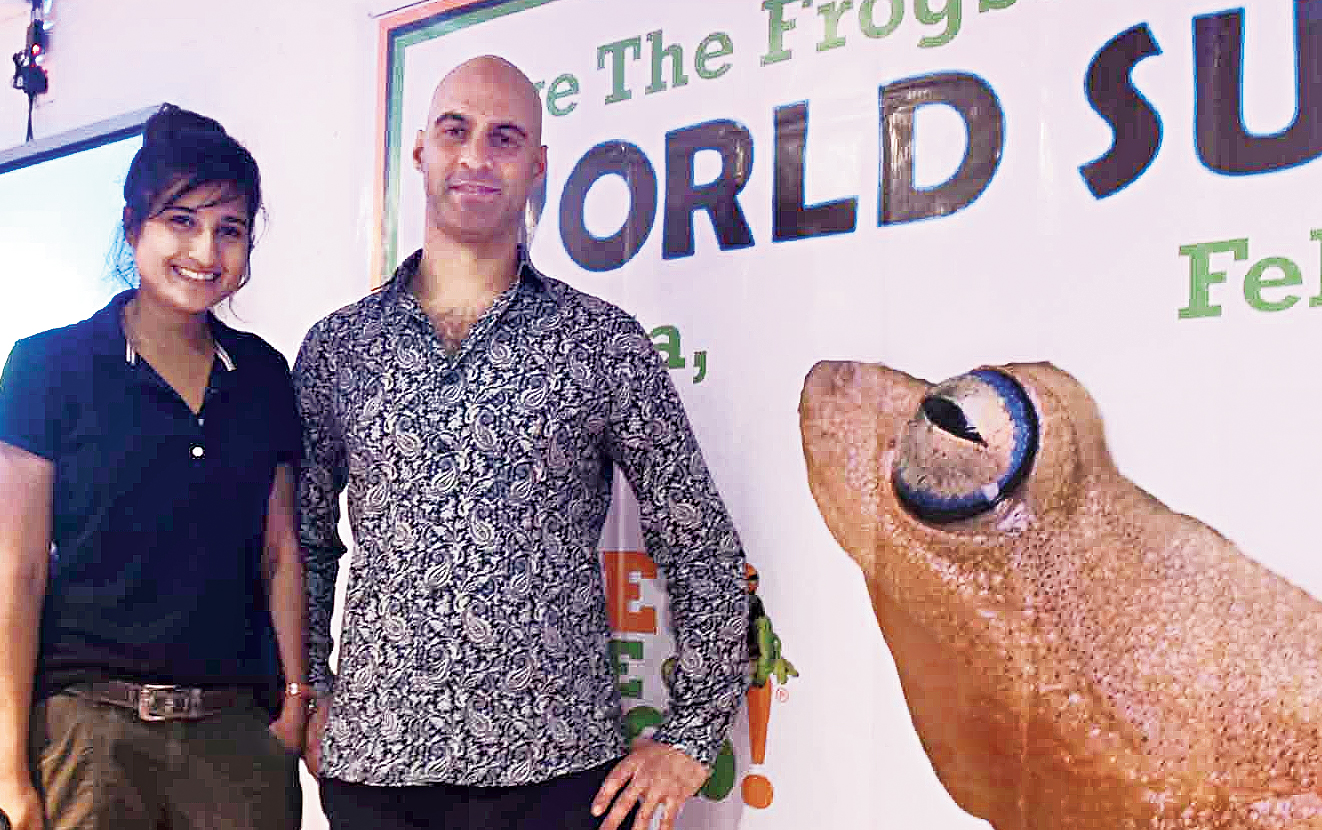Frogs, the underrated ecological warriors of the amphibian world, may have become Calcutta’s latest cause, thanks to a global summit dedicated to these creatures in a city where you would be lucky to spot one easily.
Green Oscar winner Ashwika Kapur, the Martinian-Xaverian whose 20-minute film Thumbelina: The Story of an Xmas Frog revolves around her amphibian protagonist’s quest for a suitable boy, was one of the speakers on the first day of the event attended by amphibian biologists, conservationists, artists and teachers from several countries.
For the 200 students of zoology and mass communication in the audience, the 2019 Save The Frogs! World Summit was an eye-opener in many ways.
American Kerry Kriger, who founded Save The Frogs! in 2008, said that about 200 frog species had become extinct over the past 40 years, which works out to more than 1,000 times higher than the natural rate of extinction. If the frog population were to continue decreasing at the same rate, the fallout will be dangerous for humanity, he warned.
“If we cannot protect frogs, diseases will go up because the vector population, including mosquitoes, are their food. Frogs also cleanse natural streams by consuming algae. When that stops, there will be a change in the quality of water, which can have far-reaching consequences.”
Sarbani Deb Nag of the WISH Foundation, which helped organise the summit, said Kringer wanted Calcutta to be the venue because he wanted to involve the urban population in conservation of frogs. “On Saturday, we will discuss how to build small wetlands in housing complexes that have open spaces. This will improve biodiversity and also create awareness about conservation.”
In Arizona and California, Save The Frogs! has helped create 30 such wetlands, including pools in the backyards of properties, mainly through the involvement of children in the programme.
There are currently more than 4,000 frog species in the world and they are right in the middle of the food chain, being predators for insects and prey for birds, snakes and some animals. According to herpetologists, environmental imbalance is inevitable if the frog population keeps shrinking.
“The Xmas froglet is so tiny that it can fit in a drop of rain. In my film, sound pollution is shown to interfere with the calls of the suitors reaching Thumbelina. Pesticides are sprayed, bushes are trimmed and footballs land on trees as people are unaware about the habitat of these frogs that are found nowhere else in the world,” Ashwika said on the sidelines of the summit, organised for the first time in India.
Karthikeyan Vasudevan from the Laboratory for the Conservation of Endangered Species at the Centre for Cellular and Molecular Biology, Hyderabad, spoke about the need to focus conservation efforts on protecting frog habitats, reducing road kills and cryopreserving eggs and sperms.
One of the presentations was on the breeding habitats of the Himalayan Crocodile Salamander, a kind of newt found in Darjeeling, Manipur and Arunachal Pradesh. Sarbani, who learnt Nepali so that she would be able to communicate with the local people in Darjeeling district while researching the amphibian, said sensitising populations was crucial to conservation.










